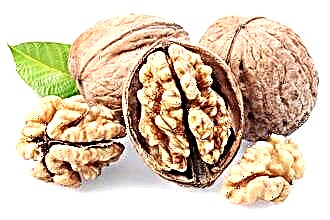Saline is widely used in medical practice. It is available in dissolved form for injection, external use (washing cavities, mucous membranes), as well as for inhalation.
 Saline for rinsing the nose can be prescribed from birth, as it is absolutely safe. Its action is:
Saline for rinsing the nose can be prescribed from birth, as it is absolutely safe. Its action is:
- moisturizing the mucous membrane;
- reduction of tissue edema;
- normalization of nutrition of the mucous membrane;
- restoration of the work of the ciliated epithelium;
- cleansing the inner surface of the nose from accumulations of mucus, dust particles, allergens, chemicals;
- a decrease in the viscosity of mucus;
- softening dry crusts so that they can be easily removed without damaging the tissue.
A few words about what saline is. Saline is an isotonic fluid, the composition of which is similar to most tissues and fluids in the body. The salt content in the solution is 9 g / l. A solution of sodium chloride for a cold is used to flush the nasal passages. It is well tolerated by the mucous membrane, can be used for medicinal and hygienic purposes.
Without fear, saline can be administered to pregnant women, in the lactation period, as well as to infants.
Indications
Sodium chloride nasal solution is used:
- to prevent the development of allergies with hay fever. Regular rinsing of the nasal passages during the flowering period is necessary to remove allergens from the nose;
- to moisturize the inner surface of the nose. If the room has dry air (humidity below 40%), nasal breathing becomes difficult, tissue edema, dry crusts may appear, which reduce the passage lumen. It is especially important to maintain the moisture content of the mucous membrane during the heating season, when using an air conditioner;
- to cleanse the mucous membrane. With a prolonged stay in a room with dusty air, mucus becomes more viscous, tissues lose their protective properties, therefore, the risk of infection increases;
- to remove large amounts of mucus with a runny nose, which makes nasal breathing easier;
- to prevent exacerbation of chronic diseases of the nasopharynx of an infectious nature (adenoiditis, sinusitis);
- for the prevention of colds, ARVI by maintaining a sufficient level of mucosal protection.
Washing procedure
You can prepare the sodium chloride solution yourself. To do this, you need 9 g of salt, boiled warm water with a volume of 1 liter. After thoroughly dissolving the ingredient, it can be used to treat rhinitis by flushing the nasal passages.
Such a remedy is non-sterile, therefore it can only be used externally.
Now let's look at several ways how you can rinse your nose with saline for a cold:
- using a kettle, a small container with a spout. To rinse your nose with saline, you need to pour it into a container, bend a little over the basin or washbasin, turn your head slightly to the right. Now we bring the container to our face, place the spout of the teapot inside the right nasal passage, and begin to slowly pour in the liquid. The solution may flow out through the left nostril and partially enter the oral cavity. In this regard, the mouth should be slightly opened to ensure drainage. Blow your nose well after the procedure. Repeat washing on the other side;

- using a syringe. We collect saline into the "pear", insert the tip into the nose and begin to slowly press on the syringe. Fluid enters the cavity and gradually flows out of the other passage. You should also blow your nose after the procedure.
The liquid should enter the nasal passages under a slight pressure or by gravity. Retracting the nostril solution is not recommended.
Features of the procedure
Is it possible to rinse the nose with saline for a cold in childhood? The procedure has some peculiarities. Compliance with them will allow you to get the maximum effect from washing and prevent complications:
- the procedure is carried out one hour before or two hours after a meal;
- saline solution for the common cold will only help if it is used in a warm form. A hot solution can burn the nasopharyngeal mucosa, and a cold solution can aggravate the course of rhinitis due to tissue irritation;
- after washing, it is not recommended to go outside in the cold season for an hour;
- if the child does not know how to blow his nose, an aspirator must be used;
- the syringe can be used from the age of six. The use of aerosols at a young age is fraught with the ingress of liquid into the ear cavity through the short auditory tube.
Nasal lavage with saline is carried out with the device Neti-pot, Dolphin. They represent a container with a teapot-shaped spout.
 If the procedure is assigned to a baby, such devices are prohibited. The fact is that the nasal mucosa in babies is very delicate, so there is a high risk of injury. Treatment of rhinitis with saline is carried out as follows:
If the procedure is assigned to a baby, such devices are prohibited. The fact is that the nasal mucosa in babies is very delicate, so there is a high risk of injury. Treatment of rhinitis with saline is carried out as follows:
- using a pipette, one or two drops of the solution should be instilled into each nostril;
- wait a minute, which is necessary to soften dry crusts;
- with a cotton swab, carefully remove the liquid with mucus.
If the newborn has rhinorrhea, a special aspirator is recommended to remove large amounts of mucus. They can be of several types:
- electronic. For work, it is enough to insert the tip into the nasal passage, turn on the device;
- vacuum. Differs in high cost. Due to the noise of the operating device, the baby can become restless, which is undesirable for the procedure. Possible tissue trauma may be due to increased motor activity of the newborn;
- mechanical. It looks like a tube, one end of which is inserted into the nasal passage of the baby, the other is clasped by the lips of one of the parents. When the latter is inhaled, mucus slowly begins to move through the tube and accumulates in the flask. The disadvantage of such an aspirator is the high risk of infection of parents by inhalation of viruses.
For babies, it is recommended to use ready-made saline solution purchased from a pharmacy.
A home-made drug can have a high salt concentration, which is fraught with increased tissue swelling and nasal congestion.
The drug can be used up to five times a day (for a cold), once a day - for hygiene. The duration of the therapeutic course is 2 weeks. If it is necessary to continue rinsing the nasal passages, the course is repeated after 2 weeks.
This is necessary to restore the physiological composition of the flora of the nasopharynx.
Despite the absence of contraindications and side reactions, saline solution, if the duration of the course is exceeded, can change the quantitative composition of the microflora in the nasal passages.
Useful solutions
Saline isn't the only solution that cures rhinitis. For rinsing the nasopharynx, you can use antiseptic, herbal, anti-inflammatory drugs. To facilitate breathing, rinse your nose:
- herbal decoctions, infusions. Chamomile, sage, coltsfoot, yarrow, oak bark have a mild anti-inflammatory, decongestant, regenerating effect. To prepare the medicine, it is enough to pour 15 g of grass with boiling water with a volume of 280 ml, cover with a lid, wait 20 minutes. After cooling, the infusion should be filtered and used for rinsing. For this purpose, many herbs can be used, but do not forget about the risk of an allergic reaction;
- Aqualor, Aqua Maris, Morenazal, Humer, which are produced in the form of an aerosol, drops.Vials have different attachments, which allows you to choose a drug for any age;
- Furacilin, Miramistin, Chlorophyllipt, Dioxidin. The listed solutions have powerful antiseptic properties, thanks to which it is possible to quickly overcome microbes and sanitize the infectious focus. Before use, you should read the instructions, since some drugs require dilution. Miramistin can be used prophylactically during an epidemic to reduce the risk of infection. The medicine is used to flush the nasopharynx after severe hypothermia and communicate with a person suffering from a viral pathology.
Before you start flushing, you need to take into account possible contraindications. They include nasal bleeding, violation of the integrity of the tissues of the nose, as well as individual intolerance to the components of drugs.




